Editor’s Note: Bill and Denise Semion are members of LTV’s sponsored content team, The Leisure Explorers. Do you own a Leisure Travel Van and enjoy writing? Learn more about joining the team.
Time Ta Explore Da U.P. Again, Don’tcha Know
When we last left you with Part I, we had circled the eastern half of Michigan’s Upper Peninsula, introduced you to Yooperspeak, pasties, and some pretty neat campgrounds, and explored some sites that may not have been on your to-see list.
Now, we’ll explore da western half of Da U.P., which is, in my opinion, far more rugged and remote, and just as historic and picturesque, maybe more so. And why does the headline above say “go west” when most of us actually go north to get here? I’ll explain in a bit.
The topography here definitely takes a turn to forest and “mountains” – which for those in the west are more like foothills, but are mountains for us Midwesterners. On the way, you’ll learn of the peninsula’s mining history, see some of the oldest mountains in the world, see some of the most beautiful scenery in the upper Midwest, and get lost in the beauty of hundreds of waterfalls. Perhaps hunt for agates, silver, and Michigan’s state gem, and perhaps see moose, wolves, bear, and maybe even an elusive cougar, and pick up another U.P. delectable or two.
So wid our Yooperspeak translator app in hand, we’re off!
Marquette West
We’ve separated the U.P. into easily handled regions at Marquette, so we’re starting again at the peninsula’s largest city. You may want to stop at the Travel Marquette offices downtown amidst some beautiful red sandstone late 19th century buildings. That stone was cut in local quarries and is a trademark look of the city.
After reading Part I, you may have overnighted along the way at the Munising Tourist Park west of Munising, featuring great sites along the Superior shore. It’s a popular stop, but if you can’t get in there, a reservable National Forest Service campground is nearby, where you can see some spectacular sunsets.
Just for more refreshers, perhaps stop for Yooper vittles at Jean Kay’s Pasties & Subs near the Yooper Dome (otherwise known as the Superior Dome, one of the world’s largest wooden structures), Thill and Sons Fish House for smoked fish, and other spots you might see.
But before you get there, take a dip in Lake Superior at the beaches along M-28, like Au Train Beach, which are more “refreshing” earlier in summer than later on, when the lake finally warms to non-heart-stopping temperatures. Pull off M-28 to see the interesting open air “junkyard art” exhibit at Lakenenland.
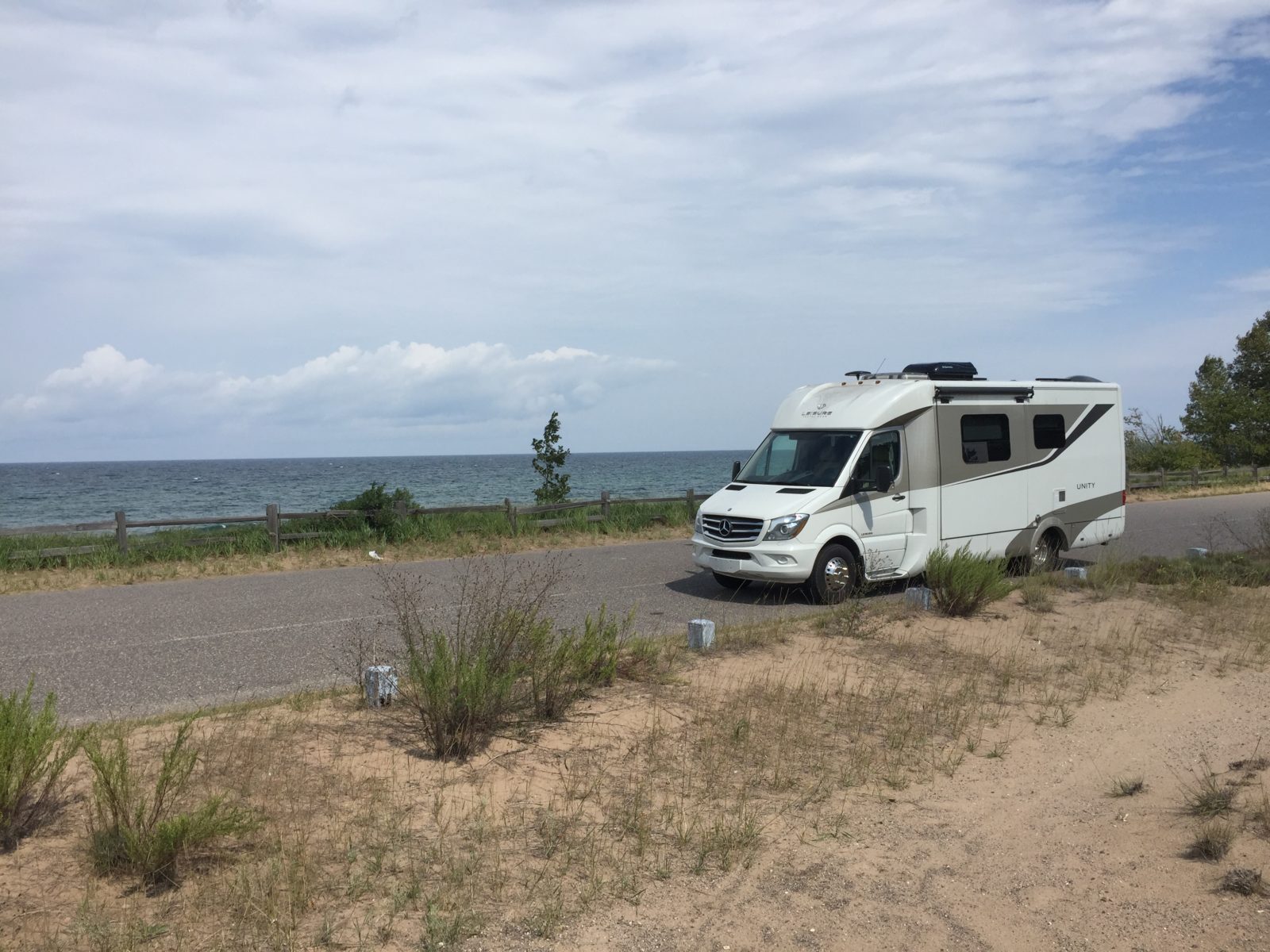
For an intro into the region’s history, drive through the 19th century red sandstone buildings downtown. Get there by passing lower Marquette Harbor’s old iron ore freighter loading “pocket” dock, to the upper harbor’s still-working facility that uses gravity to pour ore into ship holds. You may get lucky and see an ore boat being loaded there.
Or, take a tour through treed Presque Isle State Park along the lake, then rotate south, pick up M-28/US 41, and head west.
Negaunee
In the former mining town of Negaunee (pronounced Na-gahn-ees in Yooper), stop where a pyramid monument in Miner’s Park marks the nearby discovery of iron ore in 1844 by William Burt, a surveyor who noticed wild swings in his compass. Thus began a rush to the region that was also powered by copper (more on that later).
The monument was moved here from the original site near Jackson Mine Park in Negaunee, where you can still see where iron mining in the upper Midwest began, powering the nation’s industrial rise and helping the North win the Civil War, and the Allies win World War II. All this is also part of the 48-mile Iron Ore Heritage Trail, a hiking/biking route.
Next up is another iron mining town, Ishpeming, site of the Cliffs Shaft and Museum, visible from M-28.
The area’s history is also captured at the Michigan Iron Industry Museum near Negaunee, site of the first iron forge in the Lake Superior region.
Now for a bit of froth: Just a little west of Ishpeming, souvenir shoppers and the curious might want to duck into Da Yoopers Tourist Trap. Founded by members of a comedic singing group that pokes fun at Da Yooper life, they also decided to trap unsuspecting tourists who like a good chuckle into souvenir shopping.
It’s a store filled with the usual trinkets, rocks, minerals and other U.P. gems, as well as the group’s music. Outside, “marvel” at sites like Big Gus, an oversized chainsaw, and other displays. You can also learn about nearby Jasper Knob, a rocky outcropping composed entirely of hematite and jasper.
Coming up is a great opportunity to overnight at Van Riper State Park, at the east end of huge Lake Michigamme, right off M-28/US 41.
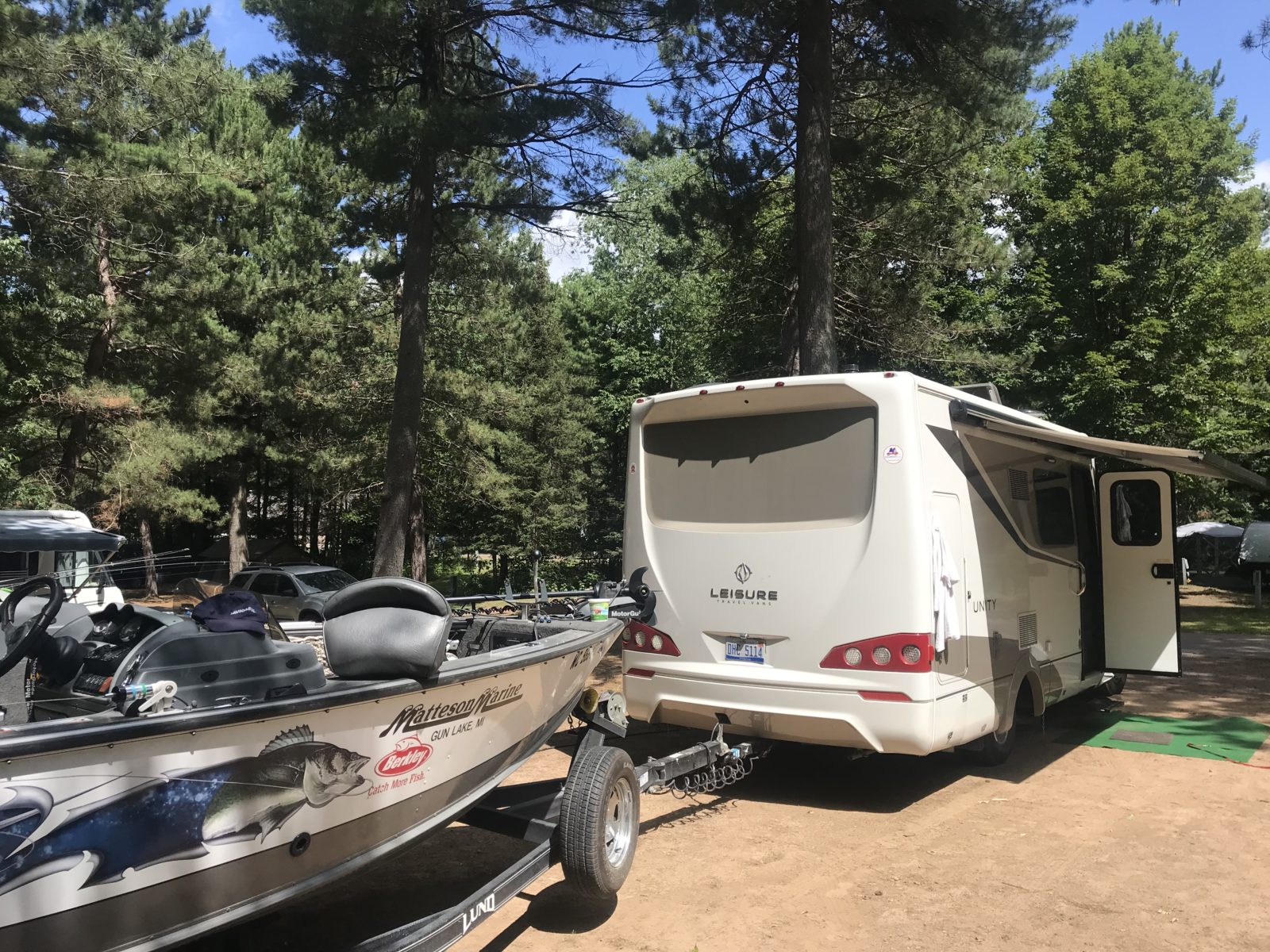
Michigamme is typical of many lakes and rivers in the western U.P., colored brown by tannins in the water from trees and wetlands feeding the lake. Amenities include a large beach, boat launch, and wooded sites, albeit some tighter than others.
Van Riper is also ground zero for Michigan’s moose herd, reintroduced here from Canada in the mid-1980s. A kiosk tells the story. Michigamme Shores Campground is just to the west, if the park is full. Trivia bit: the Mt. Shasta restaurant nearby was featured in the 1950s thriller movie Anatomy of A Murder, written by a U.P. judge.
Continue west on M-28/US 41, past farms and forest, until the roads divide. You’re going north here on US 41 toward the historic and picturesque Keweenaw Peninsula (pronounced Keewinaw), with stops along the way, the first one being Canyon Falls Roadside Park. It’s not your typical bathroom break.
Sturgeon River Gorge starts at its falls, one of 200 or so in Michigan’s Upper Peninsula. Stroll along the path leading to the Sturgeon River and its beautiful cascades and falls, where the tannin-colored river curls through a rock-walled canyon that, by Midwest standards, is impressive. The stream then wanders west, but you’ll eventually see it again, much gentler, as it enters Keweenaw Bay.
Just to the north is the non-town of Alberta, where in the 1930s, Henry Ford built a sawmill community to provide wood for his cars, including those famous “woody” station wagons. It’s now a university research center and small museum.
As you approach L’Anse, the panorama of Lake Superior’s Keweenaw Bay is before you. But don’t drive past the Hilltop Restaurant as you approach. The Hilltop has been a travel destination for decades thanks to its famous cinnamon rolls, each of which weigh about a pound.
At the bottom of the hill and just across from the water is the campground at Baraga State Park, where you’ll learn about Bishop Baraga, the “snowshoe priest”, who served local Native Americans in the 19th century, and see the nearby shrine to him. The nearby Ojibwa Casino in Baraga also has RV camping.
You’re now entering historic Copper Country. If you’ve ever heard of 19th century newspaperman Horace Greely’s phrase, “Go west, young man”, he wasn’t talking about the Rockies. He was talking about this peninsula’s “little finger”, where copper flowed from mines that eventually reached more than a mile below surface.
They produced up to 95 percent of the nation’s copper in the late 1800s, sometimes latticed with pure silver, which rockhounds can still buy and hunt for in tailings and slag piles. The Smithsonian is home to a 3,000-pound boulder of pure copper found in the U.P. At one time, miners in some shafts had to traverse more than 1,000 feet of ladders to work deposits.
Gateway to Copper Country is through Houghton, site of Michigan Technological University, or Michigan Tech. It’s home to an annual Winter Carnival, known for its massive snow and ice sculptures, one of the first festivals to feature these. The school is also home to the A.E. Seaman Mineral Museum’s collection. Copper mining in the area only ended in the 1990s, although mining, especially for iron ore, continues elsewhere.
Houghton is also home to two of three ways to get to Isle Royale National Park. The park service’s comfortable ship, Ranger III, leaves from a former copper smelting site in Houghton on the historic Keweenaw Shipping Canal, created to protect shipping from lake storms. You can also get to the park’s hiking trails and overnight accommodations via seaplane from here, and via smaller boat at Copper Harbor. Portage Canal, cutting the peninsula, is spanned by a unique lift bridge connecting with Hancock on the north side. There’s also camping at a city park along the canal. There are great biking trails here, too.
Cross the bridge into Hancock and go up the long hill towards the old Quincy Mine. You’re now entering the heart of Keweenaw National Historical Park. Here, between the 1840s and 1968, the region’s mines produced more than 10.5 billion pounds of copper. You read that right. At the Quincy Mine site, the shaft extended nearly two miles and was the world’s longest. Tour the restored cable house of the world’s largest steam-powered hoist, used for lifting ore and miners to the surface, or see it on your own.
It was anchored by what at the time was the world’s largest concrete structure. You can ride a cog railway down a steep hill to an opening of the mine’s 7th level that’s still used to teach engineering students at Michigan Tech, and see a 17-ton copper boulder that was recently raised from Lake Superior. From all those “world’s largest” labels, you can see why the area was declared a national historical park by President George H.W. Bush.
Want a chunk of copper rock? Locals comb the tailings and still pick up pieces that the workers missed for sale on roadside stands, especially along US 41, some nearly across from the mine hoist. You can also stop at Keweenaw Gem & Gift in Houghton, on the south side of the bridge.
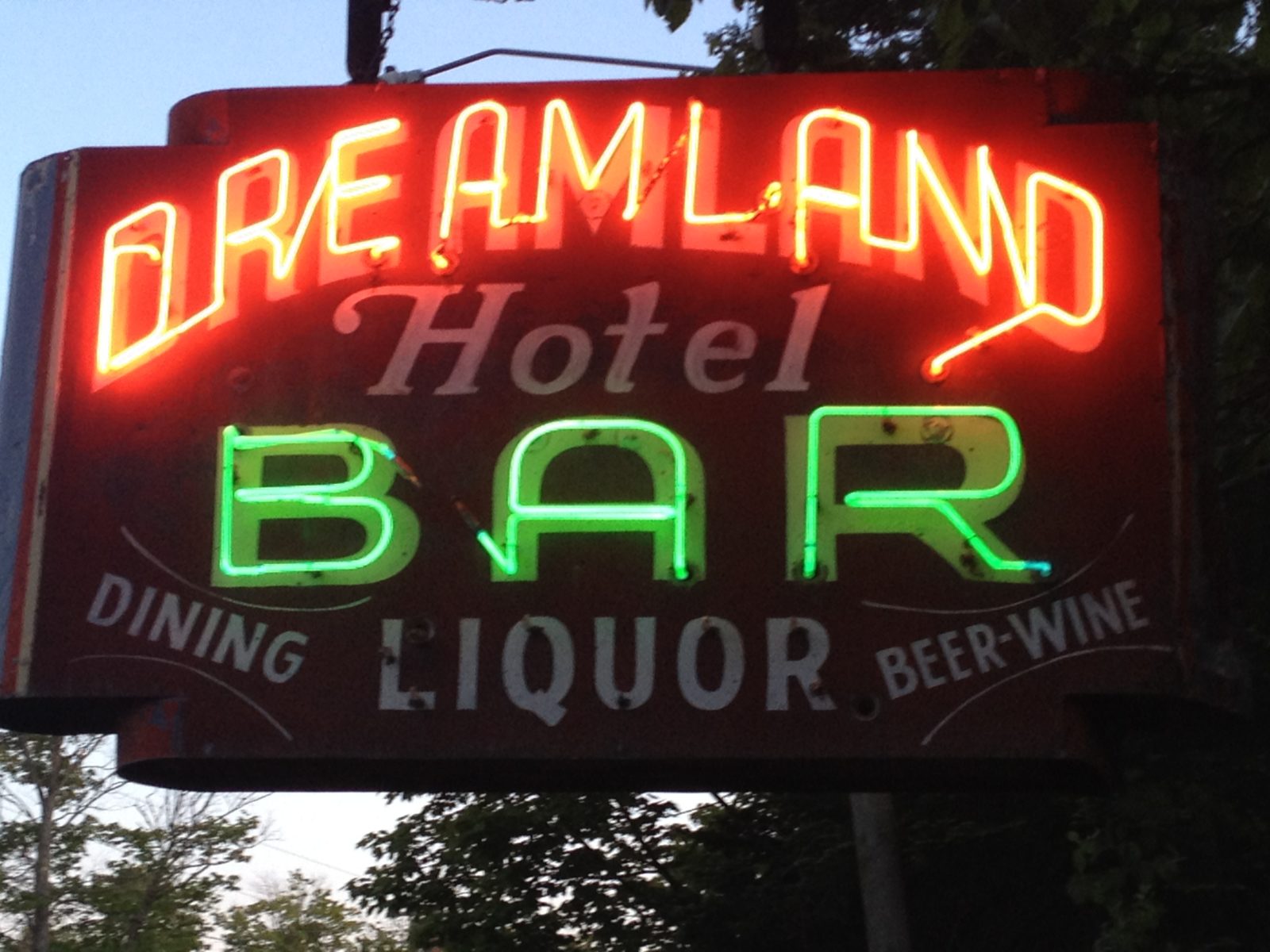
Little site tours to the town of Gay can also take you to some interesting photo and fishing opportunities, the drink cozies sold at the Gay Bar, or the photo opp Dreamland Restaurant and Bar in Lake Linden.
Continue north on US 41, through small former and mostly abandoned mining communities, to Calumet and Laurium. Calumet housed the miners laboring deep below the city. Laurium is where the mine execs lived, including a 14,000 square-foot home that’s now a B&B, the Laurium Manor. Laurium, for old-timey movie buffs, is the home of George Gipp, that “win one for the Gipper” guy portrayed by then-actor Ronald Regan.
That community dichotomy, combined with working conditions underground, also resulted in unrest, a situation that was never better illustrated than in the Italian Hall disaster.
During a particularly nasty strike in 1913, children were upstairs at the hall for a Christmas party when someone entered and yelled “fire!” There was no fire. Seventy-three people, 62 of them children, were crushed to death trying to escape down a narrow stairway. Only the entrance archway remains today. Which side is suspected of creating the panic, I’ll leave to you to ponder.
Calumet’s Copperstown USA mining museum also is part of the park. Nearby camping is at McLain State Park, a beautiful spot to stay and explore the area hard against the Superior shore. It’s one of several spots to stay on the Keweenaw, including Fort Wilkins State Park at the tip, in Copper Harbor.
The drive to “Copper”, as locals call it, is one of the most photogenic in the Midwest, due to the “tunnel of trees” that envelops much of US 41 leading up the peninsula’s spine, especially at the peak of fall colors here. You’ll pass fish-filled lakes, “bustling” towns like Phoenix (actually a single country general store), played-out copper mines-turned-tourist stops, a popular extreme ski resort, great cycling trails, and lodges, including the Keweenaw Mountain Lodge at the top of the hill above Copper Harbor. Along the way, you’ll pass the snow gauge near Houghton Airport in Mohawk.
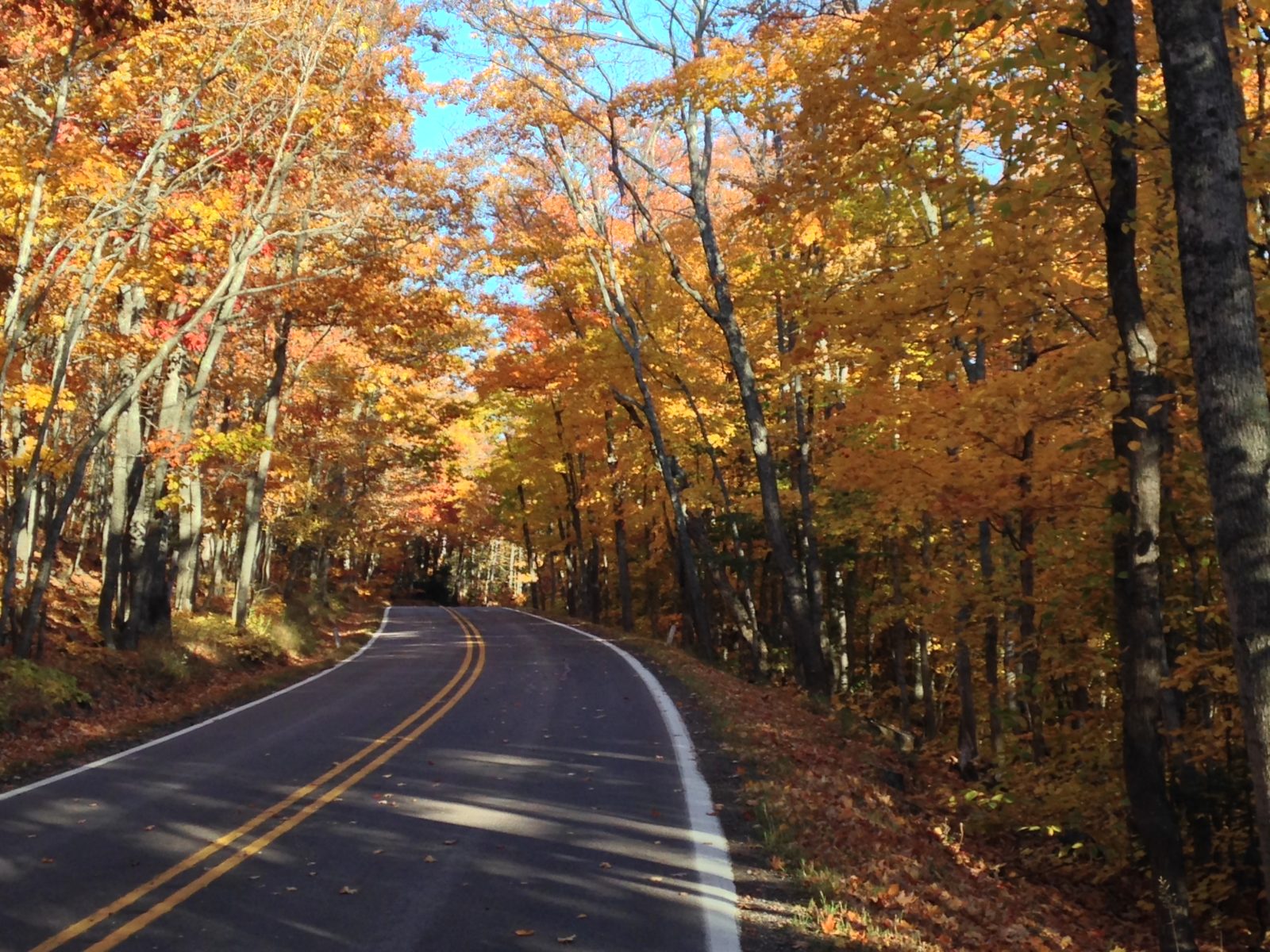
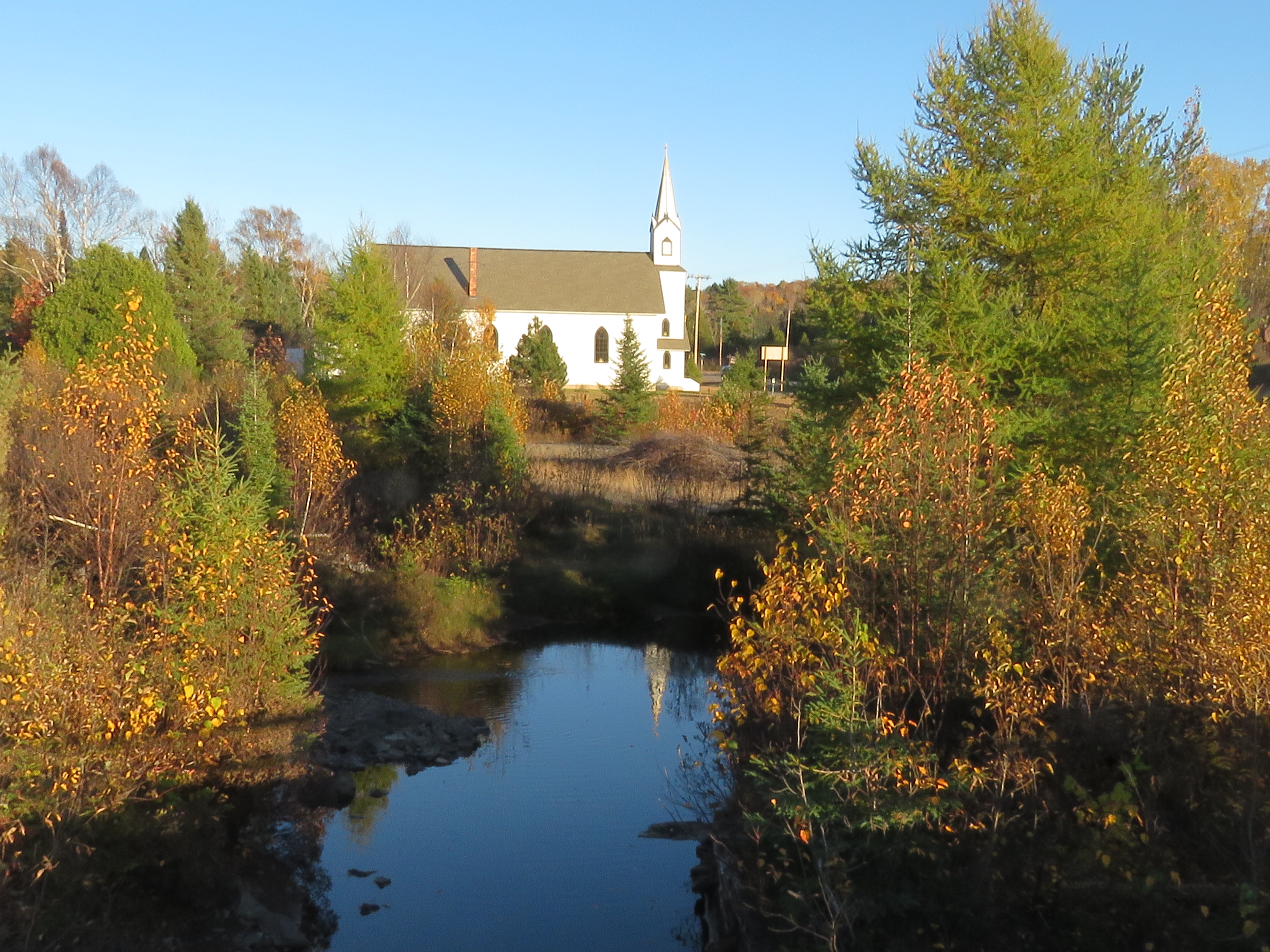
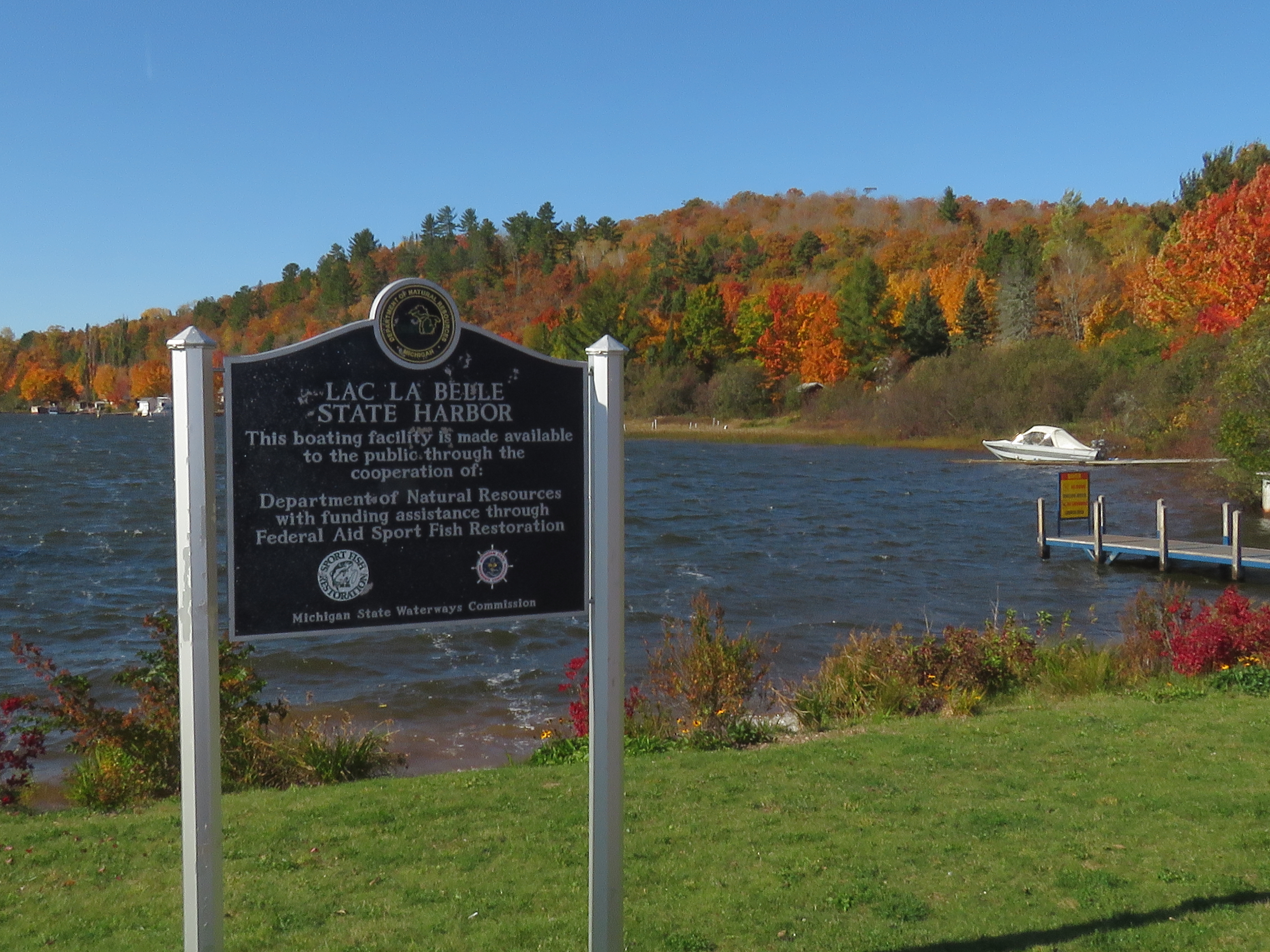
The Keweenaw is also a favorite of birders who come for annual raptor migrations, and beach rockhounds searching for agates, greenstone (the state gem), and other finds, especially along M26. Stop for dinner at the Keweenaw Mountain Lodge, and check your brakes before the hill down to Copper Harbor.
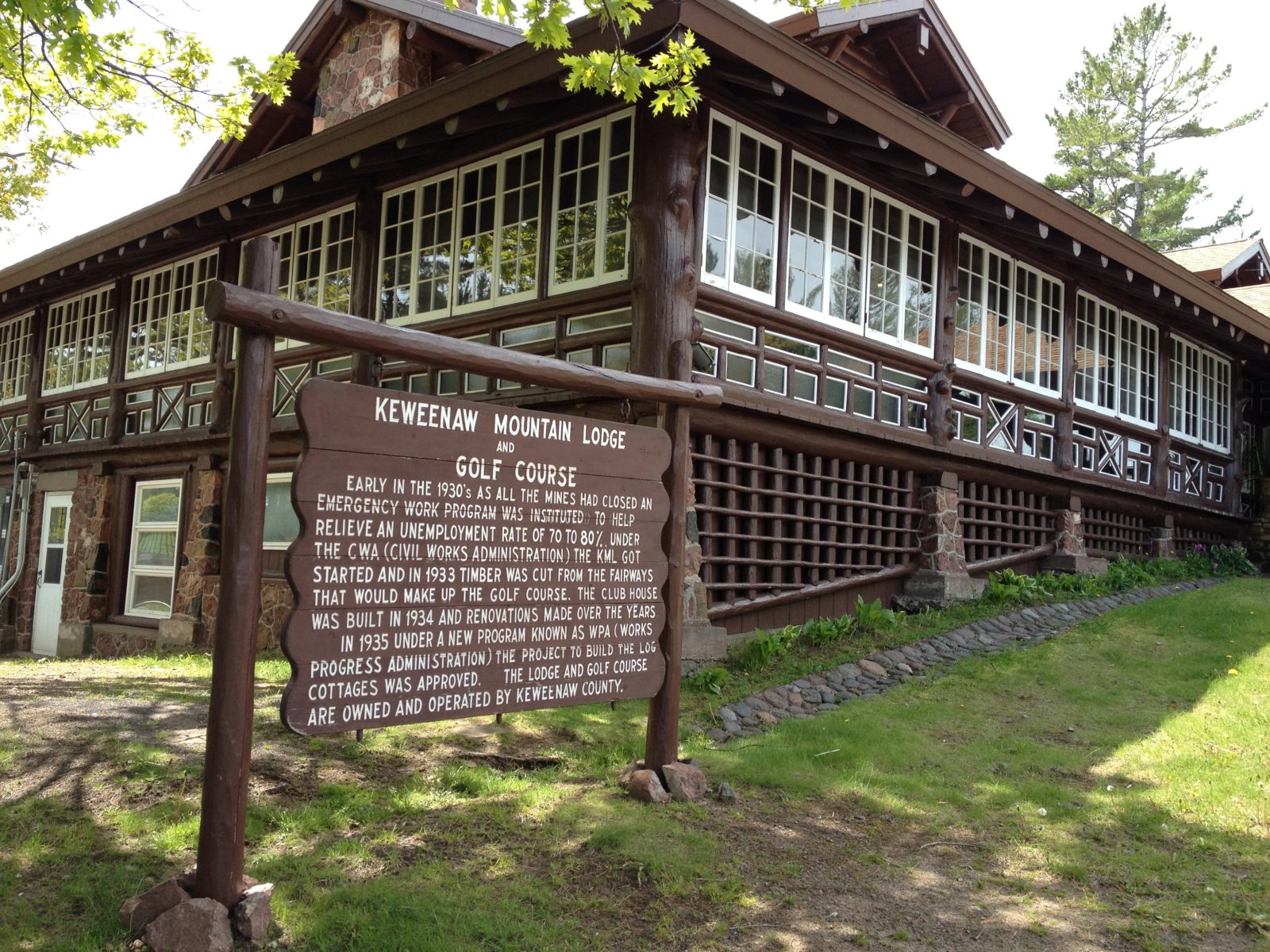
Once you get to Copper Harbor, you’re at land’s end. Take a lighthouse tour here (when it’s operating), book a local fishing guide, hike in Estivant Pines, visit and/or camp at Fort Wilkins State Park on Lake Fanny Hoe, or just enjoy a restaurant visit or two for the local specialty, Superior whitefish.
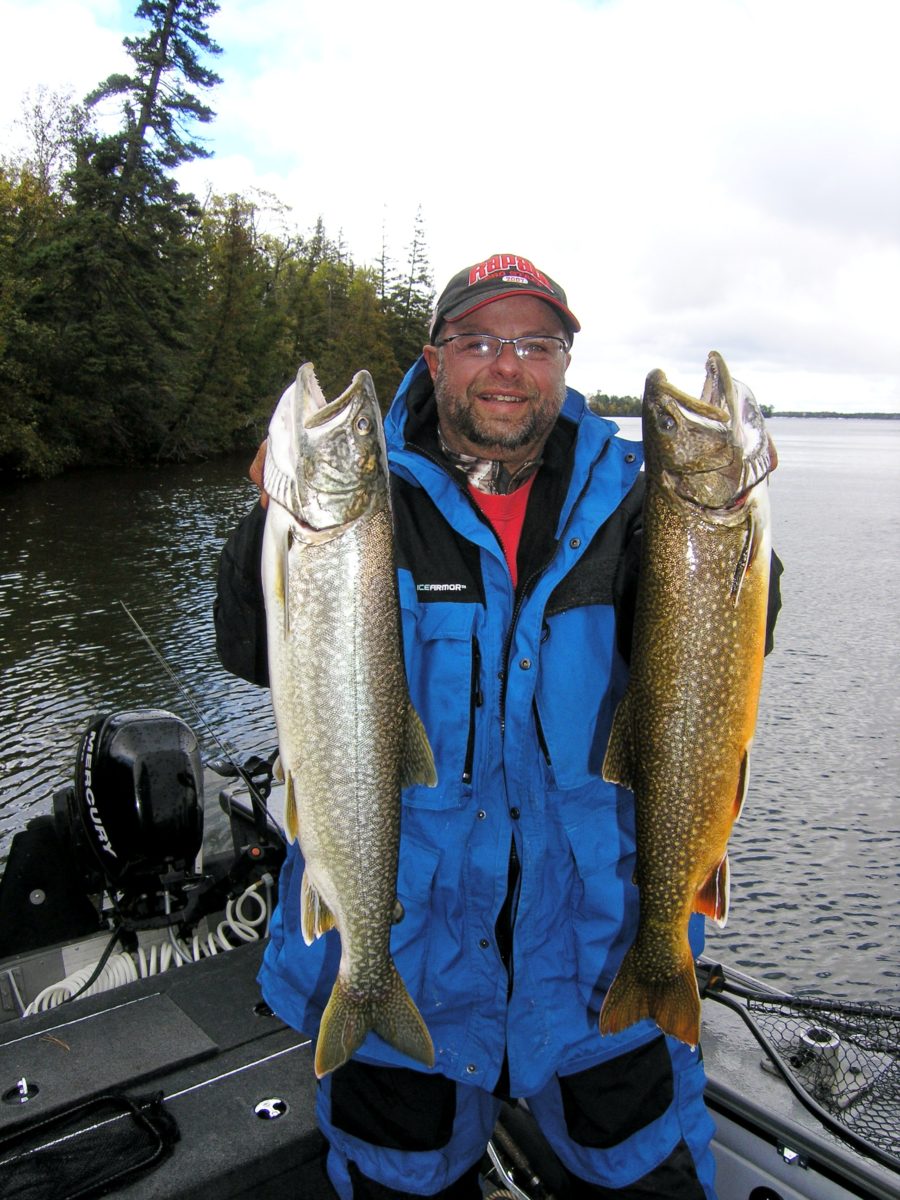
A drive up Brockway Mountain for a spectacular view of the lake is best done in a tow vehicle or a rideshare, as it’s a pretty steep switchback up, and even steeper downhill, in your LTV. You may even see a lake freighter or two from here. It is one of several scenic drives near Copper Harbor.
Copper Harbor is also where you can take that other boat to Isle Royale National Park. It earned the nickname “barf barge” because it’s smaller, and the crossing can get a mite sporty at times. Lodging on the island is available and if you’re arriving from Michigan, you’ll be required at least an overnight stay to view the island’s wildness, including its moose and wolves and its history. Another boat from Minnesota allows day trips.
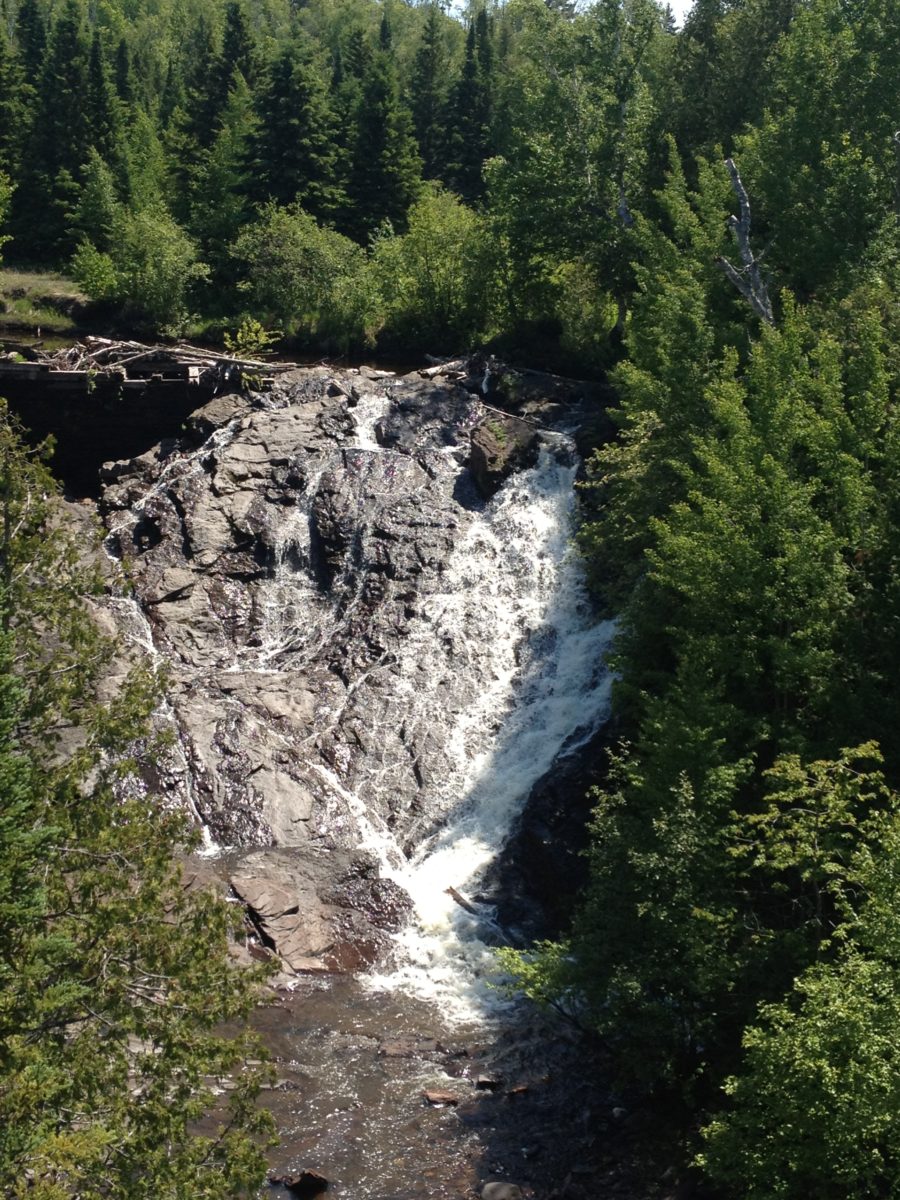
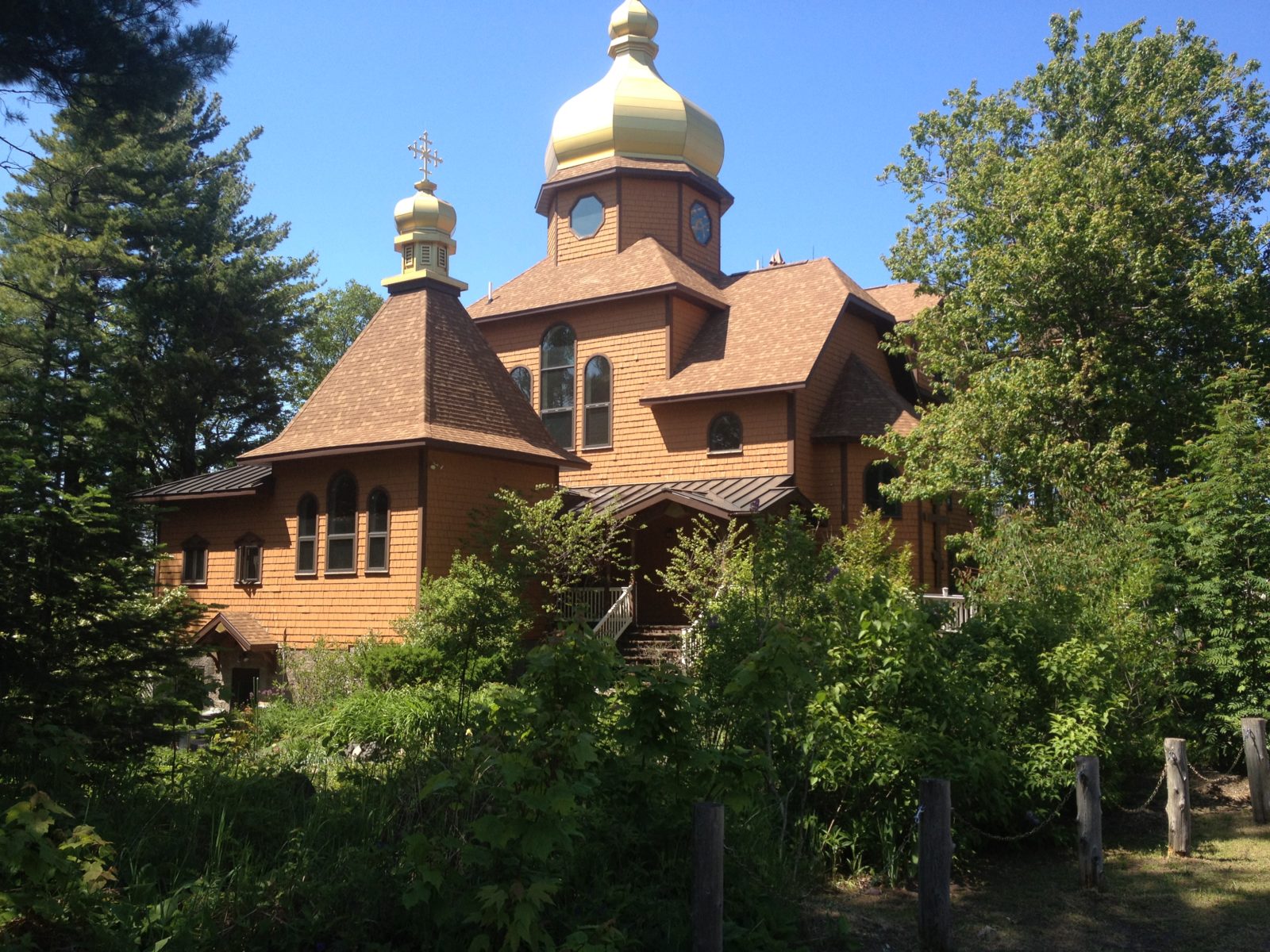
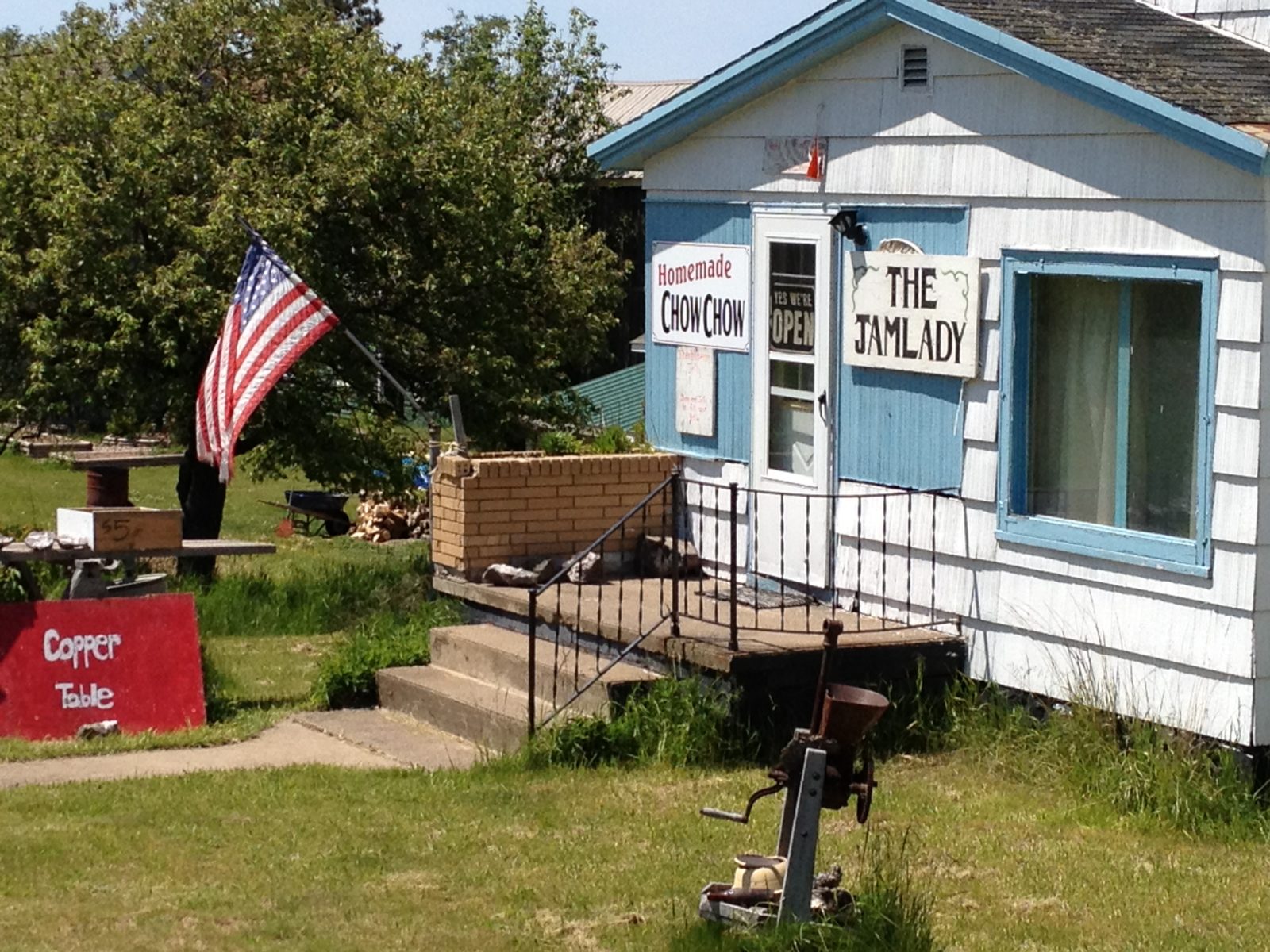
From Copper, curl back on M-26 through the small towns of Eagle River and Eagle Harbor, and perhaps stop at a unique unorthodox place to have an Orthodox monastery, and The Jam Pot bakery and store. The store is run by the monks, one of several area outlets for locally made thimbleberry jam that you can also find at roadside locations elsewhere, possibly better-priced. But, the lakeside monastery is unique. You’ll also be passing several waterfalls, just some of the 200-plus here in the U.P.
Stay on M-26 or follow the lakeshore on Five Mile Point Road back to Highway 203 towards McLain State Park, Calumet, and US 41.
At this point, I’ll stop this part of the tour, and when we meet next, I’ll conclude with “pard tree” of your Yoo Pee tour. Have fun exploring this part in the meantime, and enjoy a peaceful Superior Sunset!
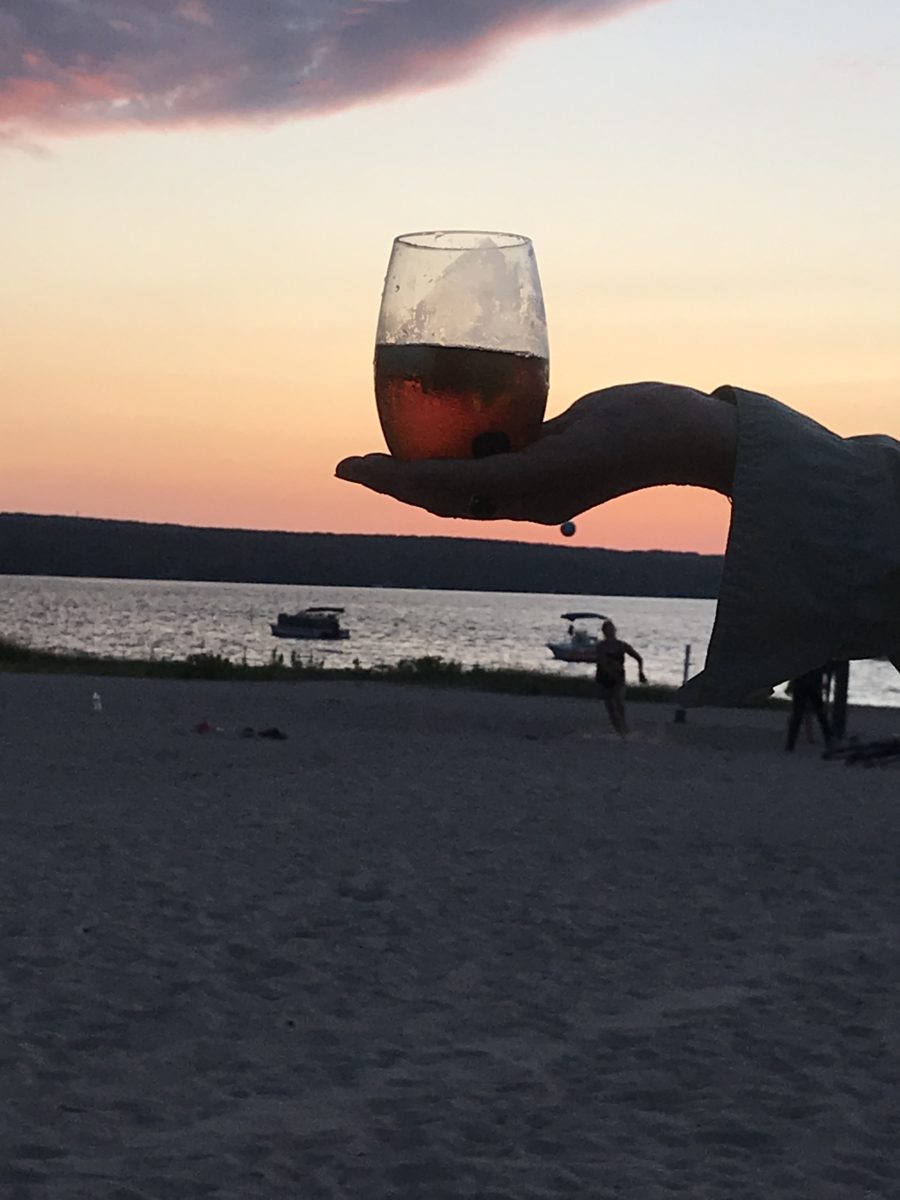


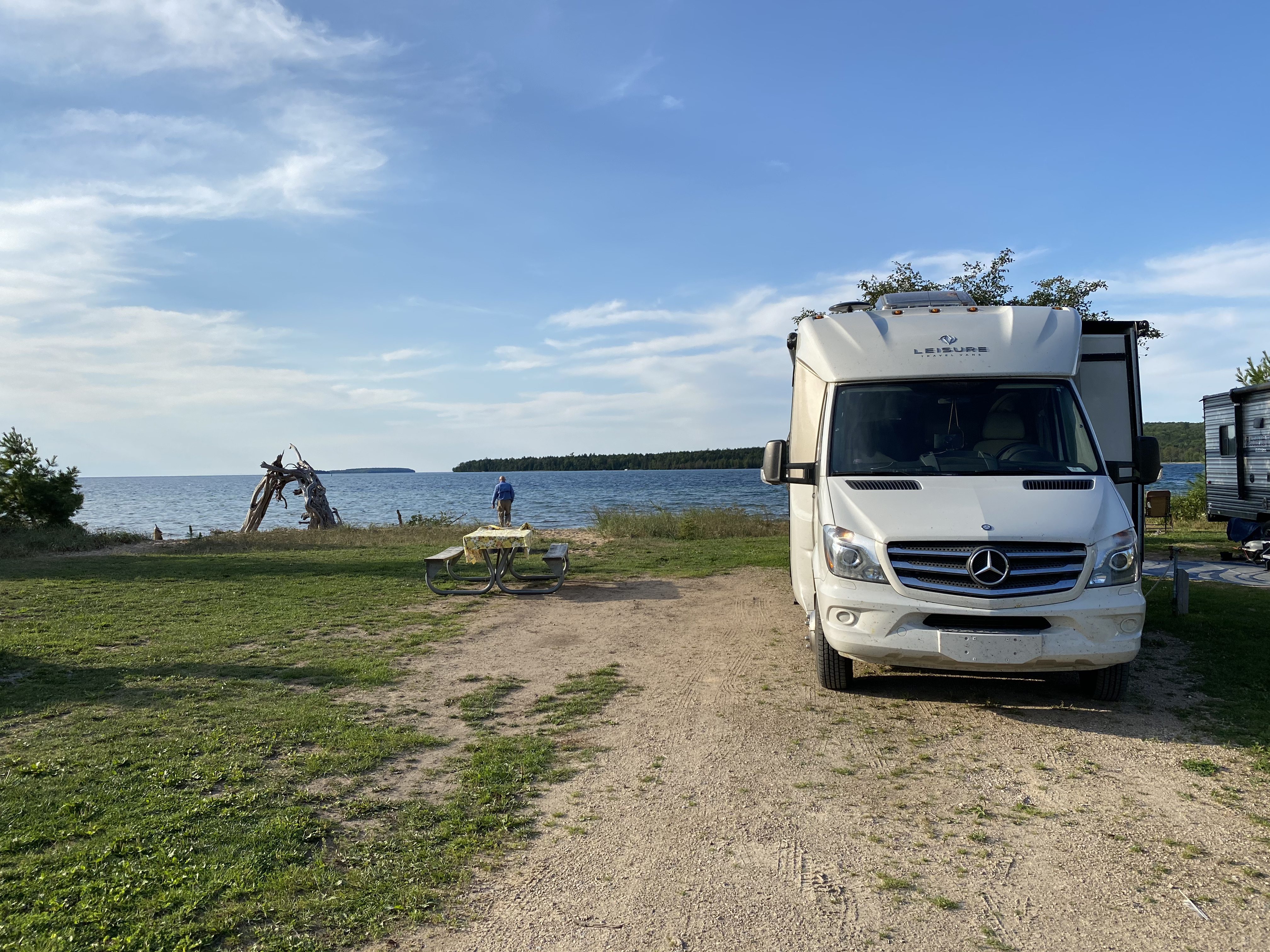

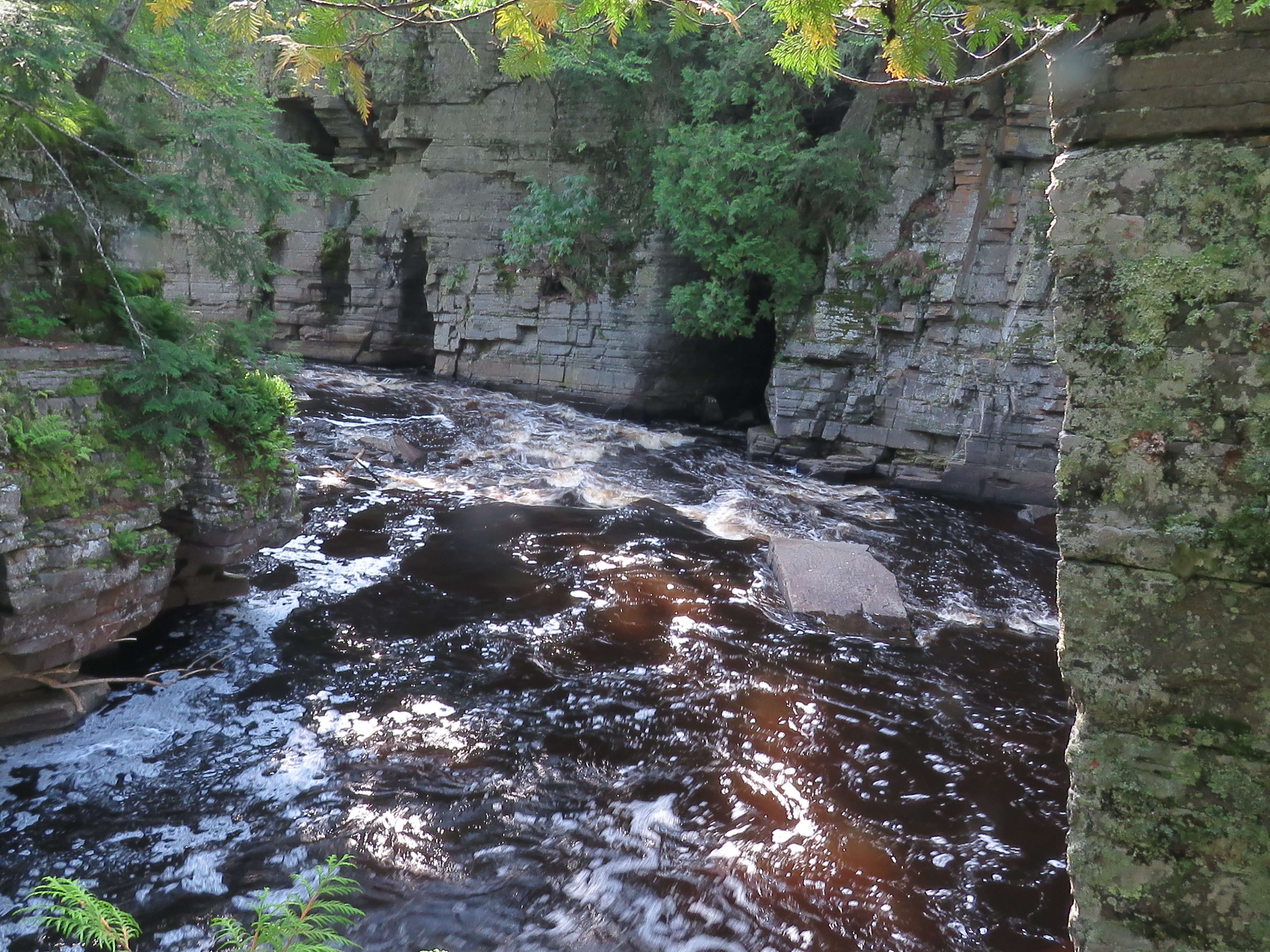
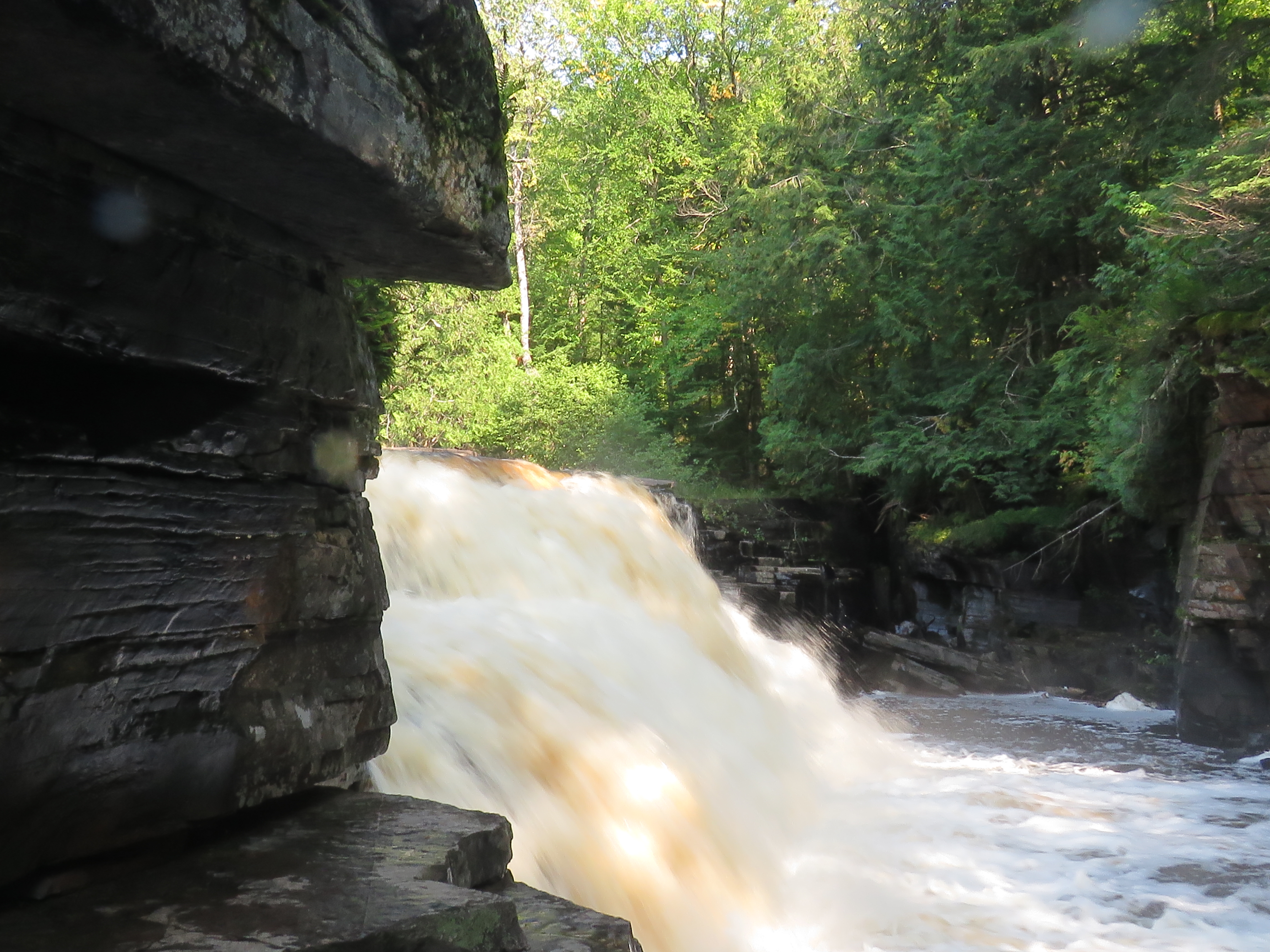
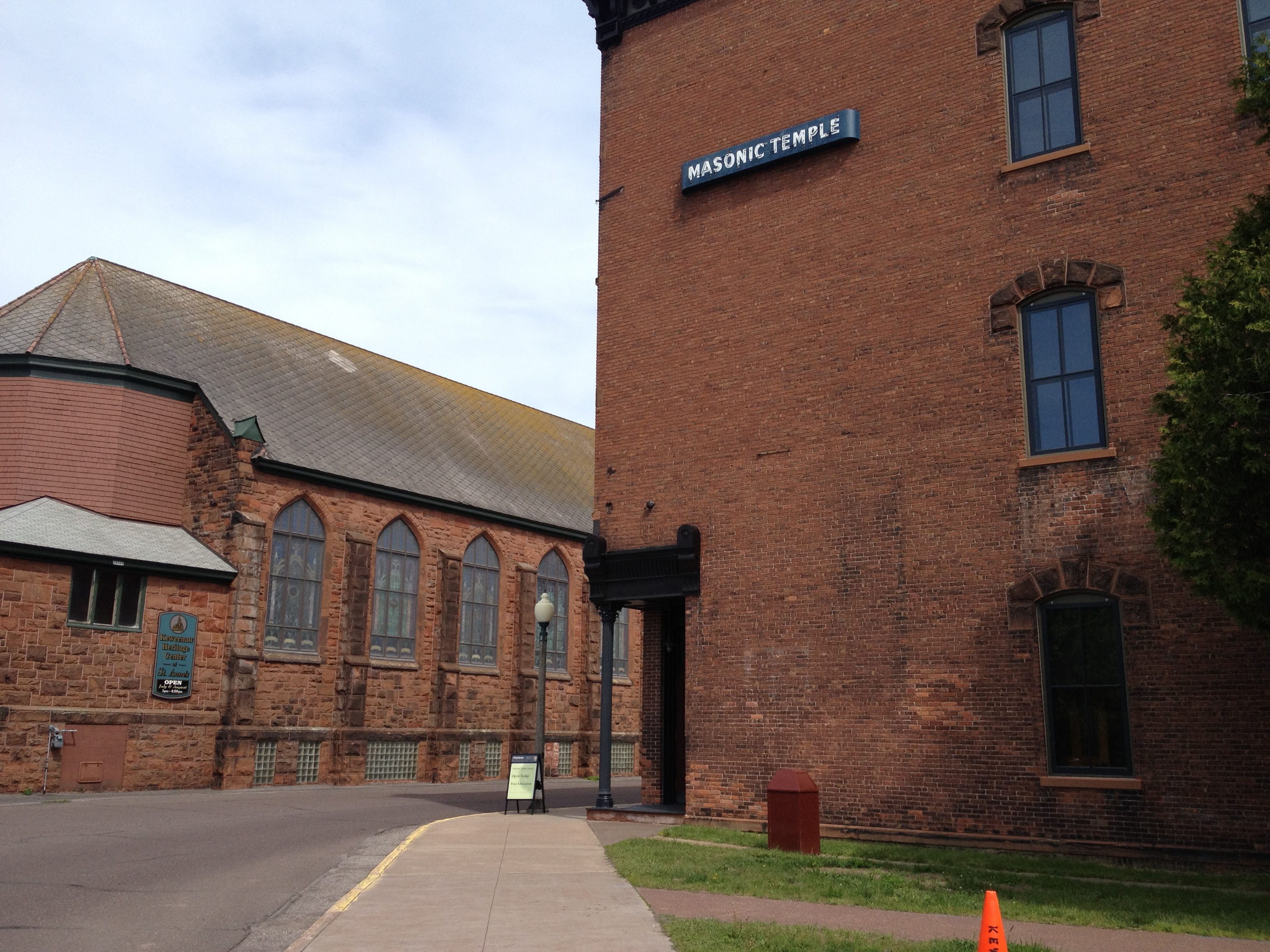
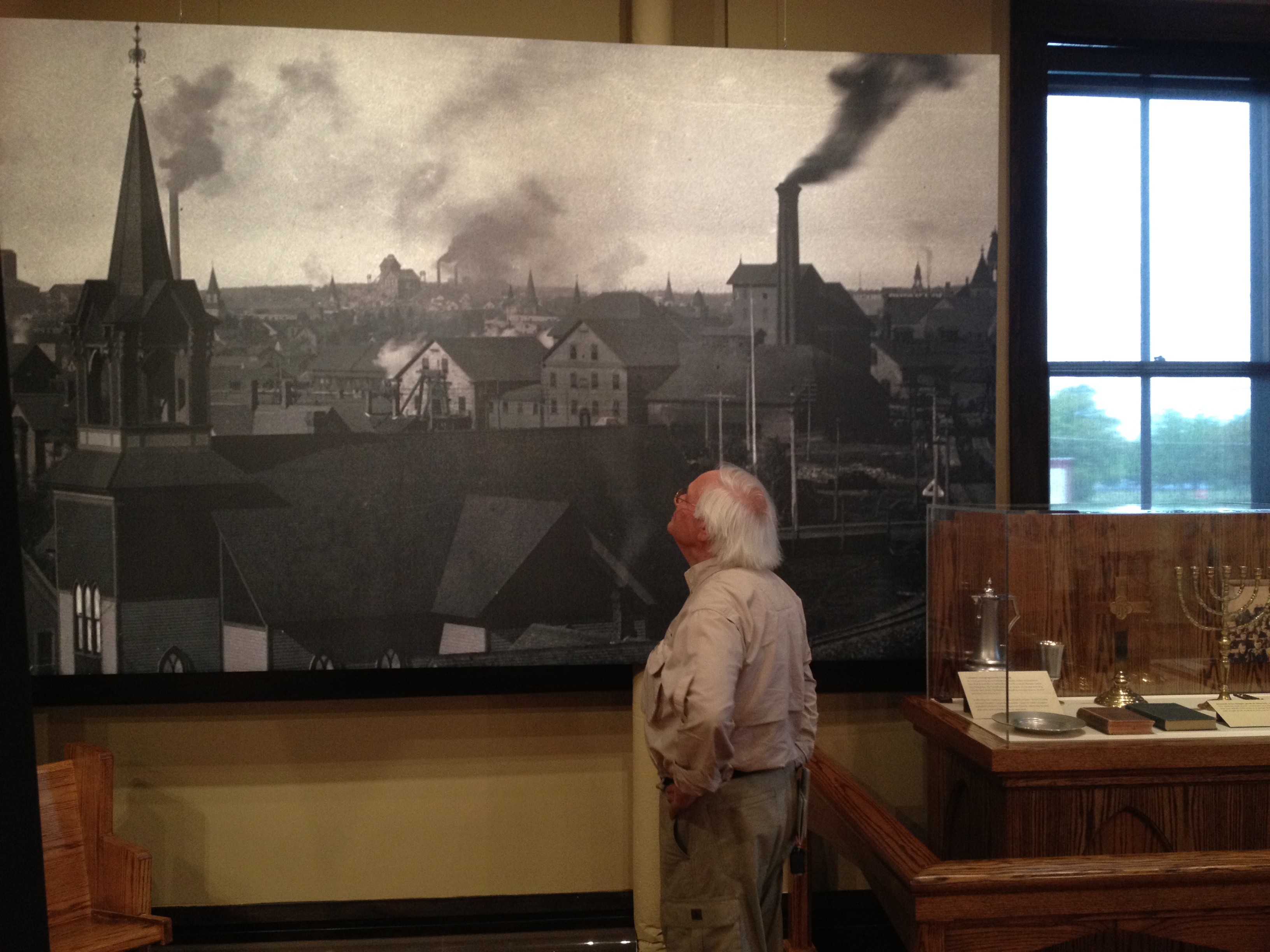


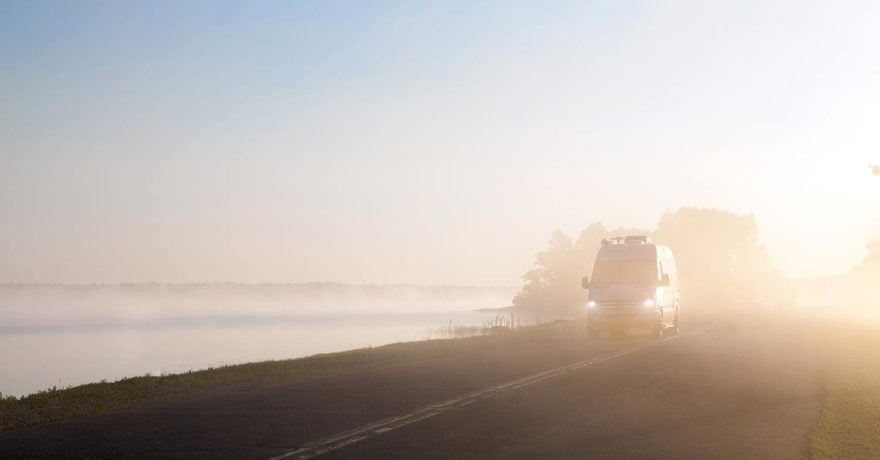
Comments